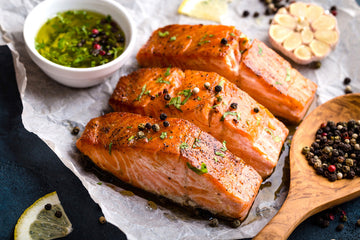In many Indian households, the belief that fish and milk should not be consumed together has been passed down through generations.
It is often claimed that this combination can lead to vitiligo, a skin condition characterized by white patches. Repeated by elders and absorbed as unquestioned truth, this notion has deeply permeated cultural consciousness. But does science support this dietary restriction, or is it merely a relic of ancestral caution?
Tracing the Origins of the Belief
This food taboo isn’t exclusive to Indian tradition — variations of it are found in other cultures as well. In Ayurveda, the ancient Indian system of medicine, the concept of viruddh aahar (incompatible foods) warns against combining items with opposing properties. Milk is considered a cooling, sweet, and soothing substance, while fish is classified as heating and heavy.
Ayurveda posits that such combinations may disrupt the body's equilibrium, generating toxins (ama) that can manifest as digestive disturbances, skin issues, or allergic reactions.
However, it’s crucial to recognize that Ayurvedic dietary guidelines are rooted in holistic principles of balance and digestion, rather than pinpointing specific diseases like vitiligo as direct outcomes.
Scientific Perspective: What Does Research Say?
From the standpoint of modern medical science, the claim that fish and milk together cause vitiligo is unfounded. Vitiligo is now understood to be an autoimmune condition wherein the body’s immune system mistakenly attacks melanocytes — the pigment-producing cells in the skin.
There is no credible scientific evidence linking the onset of vitiligo to the consumption of any particular food combination, including fish and milk.
Leading nutritionists and dermatologists have consistently debunked this myth. Dr. Anju Sood, a Bangalore-based nutritionist, has emphasized in multiple interviews that unless an individual has a food allergy or is lactose intolerant, consuming fish and milk together poses no health risks.
Furthermore, global culinary traditions offer a wealth of examples where fish and dairy co-exist harmoniously. French cuisine celebrates creamy seafood bisques, while Italian dishes frequently pair milk-based sauces with fish.
These gastronomic cultures thrive without any reported uptick in skin conditions due to such combinations.
Are There Situations Where This Combo Could Be Problematic?
While the combination itself isn’t inherently harmful, context matters. Both fish and milk are protein-rich, and consuming them together in excess may be taxing for individuals with slower digestion or underlying gut sensitivities.
In such cases, it is the quantity and individual digestive capability — not the pairing — that can lead to discomfort.
Another practical concern is food spoilage. Improperly stored milk or fish can result in foodborne illness. When consumed together, it becomes harder to identify the culprit, which might have contributed historically to the avoidance of this combination.
A Clash of Tradition and Modernity
Cultural food practices are often rooted in environmental conditions and the health knowledge of their time. In eras devoid of refrigeration or regulated food safety standards, avoiding combinations like fish and milk might have been a prudent preventive measure.
These rational customs may have later evolved into absolute taboos or superstitions.
Today, with advances in food safety, refrigeration, and medical knowledge, we can re-evaluate such beliefs with clarity and context. Modern science allows us to make informed dietary decisions without being bound by fear-driven myths.
Conclusion: A Call for Balanced Thinking
The notion that fish and milk should not be eaten together is more folklore than fact. For the vast majority of healthy individuals, this combination poses no threat. That said, dietary tolerance is personal. Individuals with known allergies, food sensitivities, or autoimmune conditions should tailor their diets accordingly — preferably under professional guidance.
Respecting cultural traditions is important, but so is engaging with them critically through the lens of current scientific understanding.
Ultimately, a safe, nutritious, and well-balanced diet, rooted in both awareness and evidence, should take precedence over inherited food fears.





